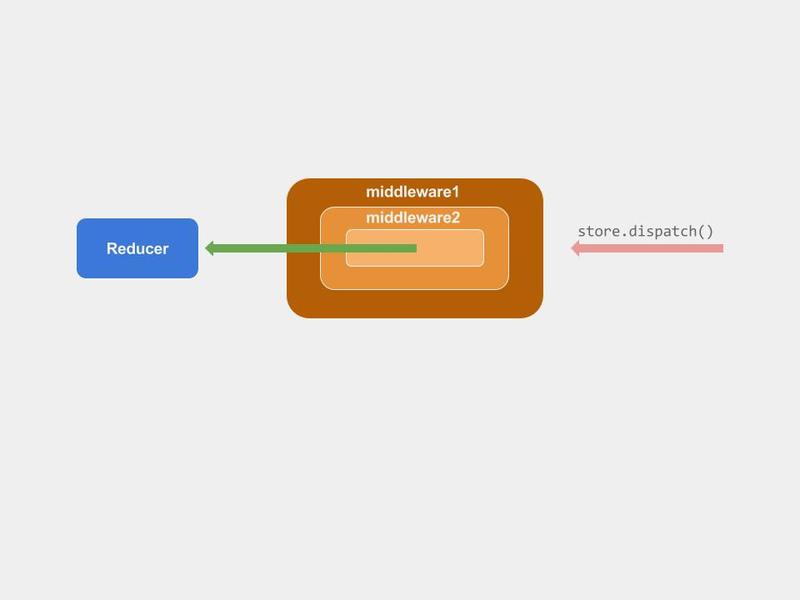name: asynchronous_actions class: cols, middle, main .fifty.main-left[ # Interactive Front-end Development by Artem Halas and Stanislav Deviatykh ] .fifty.main-right[.main-circle[].secondary-circle[]] ??? Presenter display slide notes Pre-lecture checklist * Switching between mirroring and non-mirroring works * Unrelated tabs and windows closed or minimized * Do not disturb mode **ON** * Slides cloned, one has presenters mode on * Dependencies installed and scripts are working for lecture example code * Terminal(s) open with code and window to run scripts --- # Lecture 5 * Design recap * Asynchronous processes * Dispatch middleware --- # Feedback * Don't abuse `useEffect` , it's all about passing props * Immutability in managing props and state is paramount! --- # Reducer-based application recap * Generally useful pattern in both front and back end * Can both be applied to whole applications and parts of an application --- # Reducer-based application recap * Actions describe _what happened_ **not** _what to do_ * Refer to an Actor - User or External Service * Simple, human-readable data structure * Action history should read like prose --- # Reducer-based application recap * Reducers must always be pure functions * Keep reducers simple by keeping state minimal (de-normalized) * Pure functions can be easily de-composed --- # Recipe for adding new functionality * Design high-level component tree and state object(s) * Test and implement actions and reducers * Test and implement views * Validate functionality end-to-end * Refactor --- # Design choices * Use props to make components re-usable * Not all components have to be re-usable! * Minimize components which control application-specific state --- # Avoiding boilerplate Use helper functions, include a functional programming library if necessary. * Avoid writing arbitrary loops and object processors * Use map, filter, reduce for clear and less-error-prone code * [Ramda](https://ramdajs.com/) * Great documentation and function composition * [Hey Underscore, You're Doing It Wrong!](https://www.youtube.com/watch?v=m3svKOdZijA) * [Lodash](https://lodash.com/) or [LodashFP](https://github.com/lodash/lodash/wiki/FP-Guide) --- # Avoiding mutations * Only use functions from Ramda/Lodash instead of JavaScript native functions * Use [functional-programming linter](https://github.com/jfmengels/eslint-plugin-fp) * [Forbid the use of mutating methods](https://github.com/jfmengels/eslint-plugin-fp/blob/master/docs/rules/no-mutating-methods.md) * [Immutable JS](https://facebook.github.io/immutable-js/) * Immutable JS collections spread throughout the application as conversion with native objects is costly. --- # Context .full-image[] --- # Context <img src="./assets/lecture-5/diagram-context.png" alt="diagram-context" height="450px"> [Doc](https://reactjs.org/docs/context.html) --- # Context Context is designed to share data that can be considered "global" for a tree of React components, such as the current authenticated user, theme, or preferred language. ```jsx export const ServerContext = createContext({theme, language}); ``` --- # Interacting with the outside world -- A real-world application may interact with * a back-end server through HTTP requests, * a back-end server or other users through a WebSocket, * internal timers which fire asynchronously All of these occur asynchronously - at a later, unknown time --- # Three actions in one Usually **at least three actions** per asynchronous operation are necessary: An action informing the reducers that * a request **started** * the request finished **successfully**, * the request **failed**. --- # Asynchronous code Most modern asynchronous JavaScript APIs return a [Promise](https://developer.mozilla.org/en-US/docs/Web/JavaScript/Reference/Global_Objects/Promise) ```js // promise provider: const p = new Promise((resolve, reject) => { // provider calls resolve/reject at a later time }); // promise user: p.then( (success) => console.log('success', success), (failure) => console.log('failure', failure) ); ``` --- # Asynchronous code Promises can be chained ```js const nextStepPromise = p.then( (success) => takeTheNextStep(success), (failure) => trySomethingElse(failure) ); ``` --- # Asynchronous code Promises can be `await`ed on in [`async` functions](https://developer.mozilla.org/en-US/docs/Web/JavaScript/Reference/Statements/async_function). The `async` function returns a `promise`. ```js const f = async (p) => { try { const response = await p; return takeTheNextStep(success); } catch (failure) { return trySomethingElse(failure); } }; ``` --- # Asynchronous code Asynchronous processes are not tied to the "caller" ```js const [commentsFromServer, setCommentsFromServer] = useState([]); useEffect(() => { server.getComments() .then( ({comments}) => setCommentsFromServer(comment), (failure) => handleFailureSomehow(failure) ); }, []); ``` What is the problem here? --- # Asynchronous code Asynchronous processes are not tied to the "caller" ```js const [commentsFromServer, setCommentsFromServer] = useState([]); useEffect(() => { server.getComments() .then( // Component can be unmounted by now! ({comments}) => setCommentsFromServer(comment) , (failure) => handleFailureSomehow(failure) ); }, []); ``` --- # Code example * What kind of server to use is a cross-cutting concern. In React a "Context" can be used for dependency injection. * [CommentListWithServer](https://github.com/urmastalimaa/interactive-frontend-development/blob/master/lecture_5/src/cross_cutting_concerns/components/CommentListWithServer.js) * [CommentFormWithServer](https://github.com/urmastalimaa/interactive-frontend-development/blob/master/lecture_5/src/cross_cutting_concerns/components/CommentFormWithServer.js) --- # Testing asynchronous code * [https://jestjs.io/docs/asynchronous](https://jestjs.io/docs/asynchronous) * `done` * `return promise` * `.resolves`/`.rejects` * `mockReturnResolvedValue` or `mockReturnRejectedValue` - for testing different promises * `async`/`await` * Avoid long timers by passing fake server APIs, configuring delays with parameters * `screen.findByXXX` returns a Promise in _@testing-library_ * `waitComponentToBeRemoved` --- # Calling servers Modern browsers support the [Fetch API](https://developer.mozilla.org/en-US/docs/Web/API/Fetch_API) * [Server API example](https://github.com/urmastalimaa/interactive-frontend-development/blob/master/lecture_5/src/cross_cutting_concerns/ServerAPI.js) * [Testing does not have to be hard](https://github.com/urmastalimaa/interactive-frontend-development/blob/master/lecture_5/src/cross_cutting_concerns/FakeServerAPI.js) --- # Managing complexity in reducers * As functionality grows, using "one function" to reduce the application state is not enough * Pure functions can be easily de-composed * [Reducer composition example](https://github.com/urmastalimaa/interactive-frontend-development/blob/master/lecture_5/src/cross_cutting_concerns/Comments.js) --- # Managing complexity in hooks * Hooks are just functions, users can define their own * Hooks must follow naming convention and hook-calling rules * Custom hooks can be detrimental to maintainability * They are not unfamiliar and can _do anything_ * Must be comprehensively documented * [Custom hook example](https://github.com/urmastalimaa/interactive-frontend-development/blob/master/lecture_5/src/cross_cutting_concerns/hooks/UseServerBasedOnParams.js) --- # Cross cutting concerns * Some operations - like logging - should execute without being tied to any component * For many server-side libraries a **middleware** is * _...some code you can put between the framework receiving a request, and the framework generating a response_ --- # Cross cutting concerns * Where could a middleware _live_ in a React application? * Side effects cannot be executed in a reducer as it must be a pure function * Solution: wrap `dispatch` in a composable manner [a la Redux](https://redux.js.org/api/applymiddleware#example-custom-logger-middleware) --- # Cross cutting concerns .full-image[] .footer[_from [https://www.codementor.io/reactjs/tutorial/intro-to-react-redux-pros](https://www.codementor.io/reactjs/tutorial/intro-to-react-redux-pros)_] --- # Cross cutting concerns * Middleware can be used without incorporating Redux into an application * Need to create a method to wrap the `dispatch` method from React's `useReducer` * [Wrapper hook example](https://github.com/urmastalimaa/interactive-frontend-development/blob/master/lecture_5/src/cross_cutting_concerns/hooks/UseReducerWithMiddleware.js) * [Middleware example](https://github.com/urmastalimaa/interactive-frontend-development/blob/master/lecture_5/src/cross_cutting_concerns/LoggingMiddleware.js) --- # Reasons for middleware * Logging * Error reporting * Asynchronous process managers * Augmenting actions * ... --- # Curried functions ES6 _curried_ functions can be defined with a short-hand: ```js export const myMiddleware = () => (next) => (action) => { // Code that's executed for each action }; ``` -- It seems that it takes three arguments, but it actually is: * a function that takes no arguments * and returns a function that takes one argument * and returns a function that takes one argument --- .full-image[] --- # Homework * [Requirements](https://github.com/urmastalimaa/interactive-frontend-development/blob/master/homework/weather/exercise5.md) * **Deadline 17/04/2022 23:59** * Submit zipped file to [https://courses.cs.ut.ee/2021/react/Main/Submit](https://courses.cs.ut.ee/2022/react/Main/Submit) * Make sure to handle **all states of asynchronous requests**: in-flight, failed and succeeded * Don’t forget **tests**, they will form a part of the grade * **Only submit what is yours** --- <video width="100%" height="50%" controls> <source src="assets/lecture-5/hw-5.mp4" type="video/mp4"> Your browser does not support the video tag. </video>